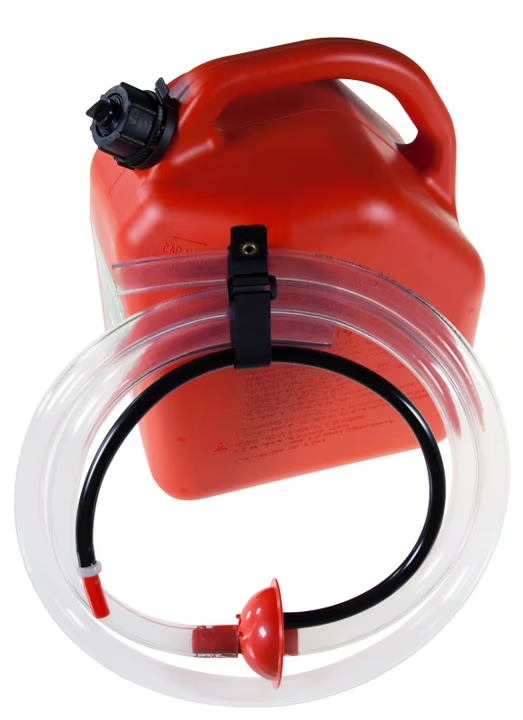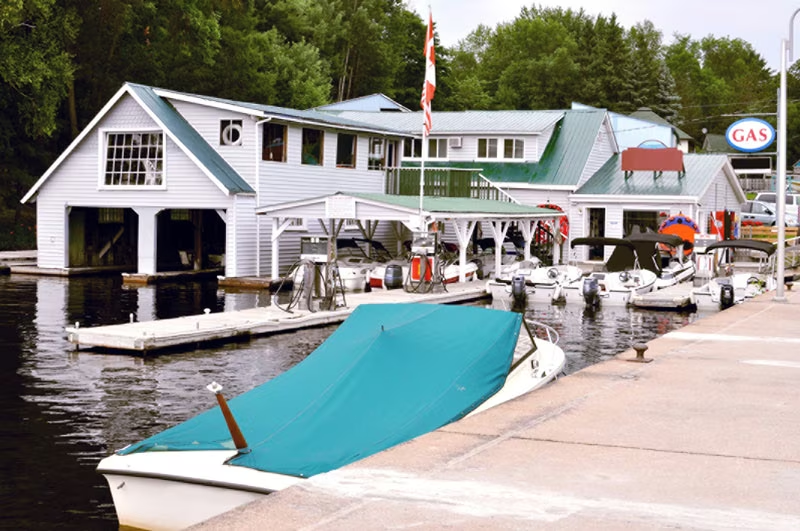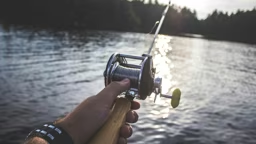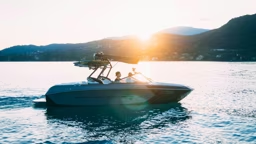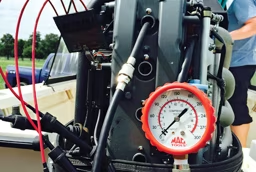Tips for safe and convenient filling up your cabin boat at the lake or in town.
By John Tiger

For lakeside cabin owners with a boating jones, there’s always the question of filling up: where to do it? If your home waters have lakeside filling marinas, this is the easiest and possibly the safest choice. Most marinas keep a careful eye on filling operations, keeping spillage and environmentally dangerous practices to a minimum.
Cost-benefit
But as most boaters know, marina gas is typically quite a bit more expensive than fuel bought in town or out on the highway. The cost savings of buying away from the lake can be substantial. There are other potential benefits of buying at stations, too; here are some pros and cons of both:
 Service stations typically sell a lot more gas than marinas. So, fuel gets refreshed much more frequently, leaving less chance for water/condensation contamination and time-diminished octane (aka “going stale”).
Service stations typically sell a lot more gas than marinas. So, fuel gets refreshed much more frequently, leaving less chance for water/condensation contamination and time-diminished octane (aka “going stale”).- If your boat requires premium fuel, it’s possible that high-volume stations will have higher-octane fuel, compared to most marinas.
- Be mindful of ethanol-enriched fuel. E10 fuel (10% alcohol content) is standard at stations in town or on the lake. However, many marinas (and possibly service stations near waterways) stock non-ethanol fuel, as they’re aware of the damage alcohol causes to boat fuel systems. Non-ethanol fuel is always better for a boat than E10 fuel. So despite the increased pump cost, it pays dividends in the long run due to reduced potential for service problems.
Fueling from your dock
It may seem attractive to fuel at your dock, considering the savings – especially if you put a lot of hours per season on your boat. However, there are potential hurdles:
- Some lakes prohibit boat owners from fueling their own boats from their own docks for fear of spillage. Check your local lake regulations.
- You’ll need a large container to make the hassle of buying and transporting the fuel worthwhile. A few 5-gallon cans will soon prove to be more of an inconvenience than a convenience. There are several options. Large-capacity, wheeled tanks with built-in manual or electric pumps are available, but they’re relatively expensive and must be stored and used cautiously (see Wheeled Fuel Transfer Tanks at www.moellermarine.com or Fuel Tanks at www.plastic-mart.com).
- Homemade solutions are also workable. I’ve used a large (45-gallon) aluminum fuel tank scavenged from an old boat, fitted with a 12-volt electric fuel pump available from sources such as Grainger (www.grainger.com) and Northern Tool + Equipment (www.northerntool.com). I transport this tank in the bed of my pickup to a service station, and from the pickup bed to the dock using a Powerwagon (www.drpower.com). It takes little effort to put it in the pickup bed when empty, but muscle and caution to get it from the pickup bed to the wheel cart when full – 45 gallons of fuel at 6 pounds per gallon is almost 300 pounds when you include the tank!
- A simple siphon hose such as the Turbo Siphon (www.turbosiphon.com) can make transferring fuel from a portable can to your boat both cleaner and safer.
Be mindful of the potential for environmental damage and real danger should you spill fuel into a lake. Take extra precautions; use a large-mouth filtered funnel that fits securely into your boat’s fuel filler neck. Have someone help you. Watch for rough water approaching, which could cause a spill. Heed these precautions wherever you fill up.
John Tiger has owned over 60 boats (and fueled them all!) since the 1970s.
 For lakeside cabin owners with a boating jones, there’s always the question of filling up: where to do it? If your home waters have lakeside filling marinas, this is the easiest and possibly the safest choice. Most marinas keep a careful eye on filling operations, keeping spillage and environmentally dangerous practices to a minimum.
For lakeside cabin owners with a boating jones, there’s always the question of filling up: where to do it? If your home waters have lakeside filling marinas, this is the easiest and possibly the safest choice. Most marinas keep a careful eye on filling operations, keeping spillage and environmentally dangerous practices to a minimum.
 Service stations typically sell a lot more gas than marinas. So, fuel gets refreshed much more frequently, leaving less chance for water/condensation contamination and time-diminished octane (aka “going stale”).
Service stations typically sell a lot more gas than marinas. So, fuel gets refreshed much more frequently, leaving less chance for water/condensation contamination and time-diminished octane (aka “going stale”).


